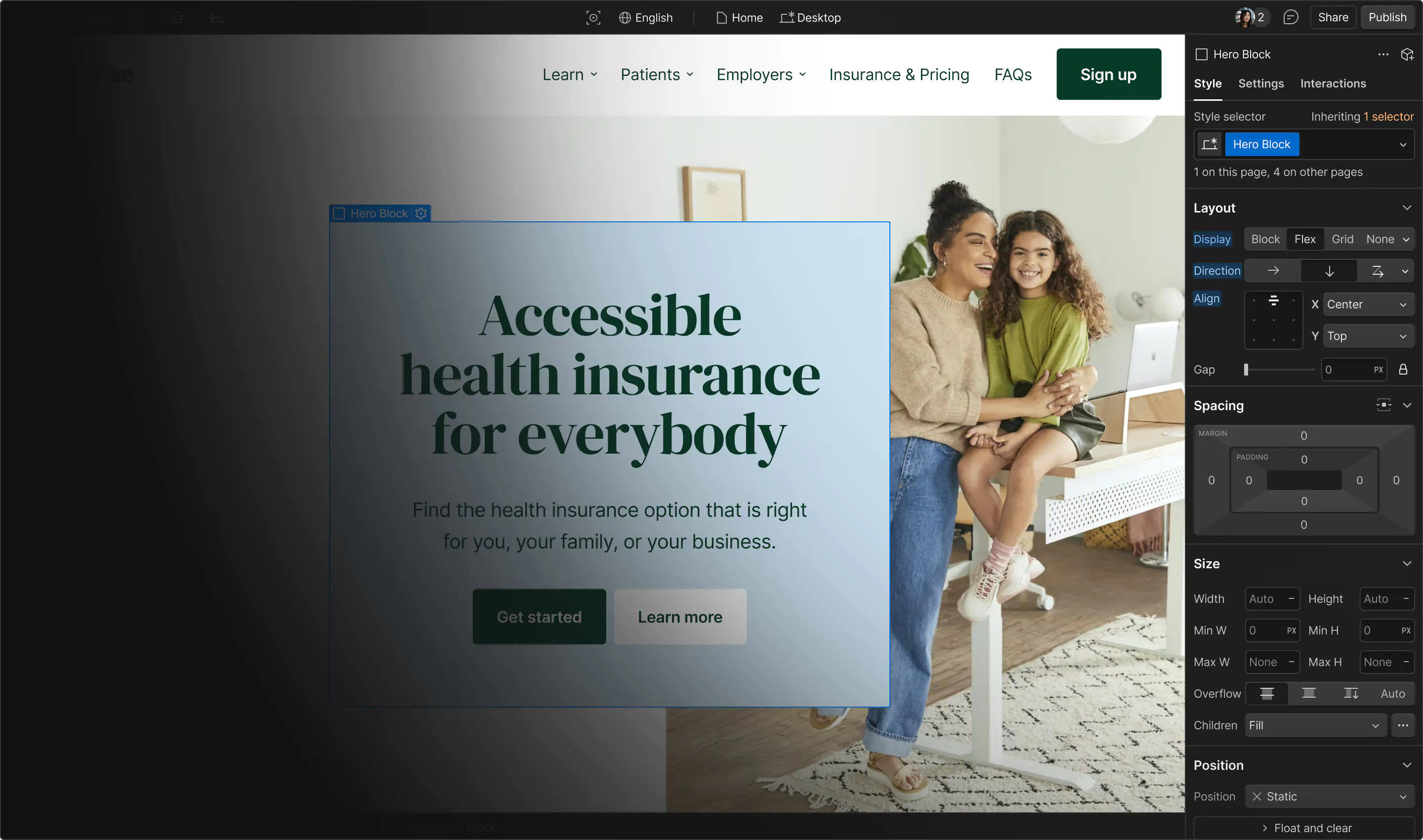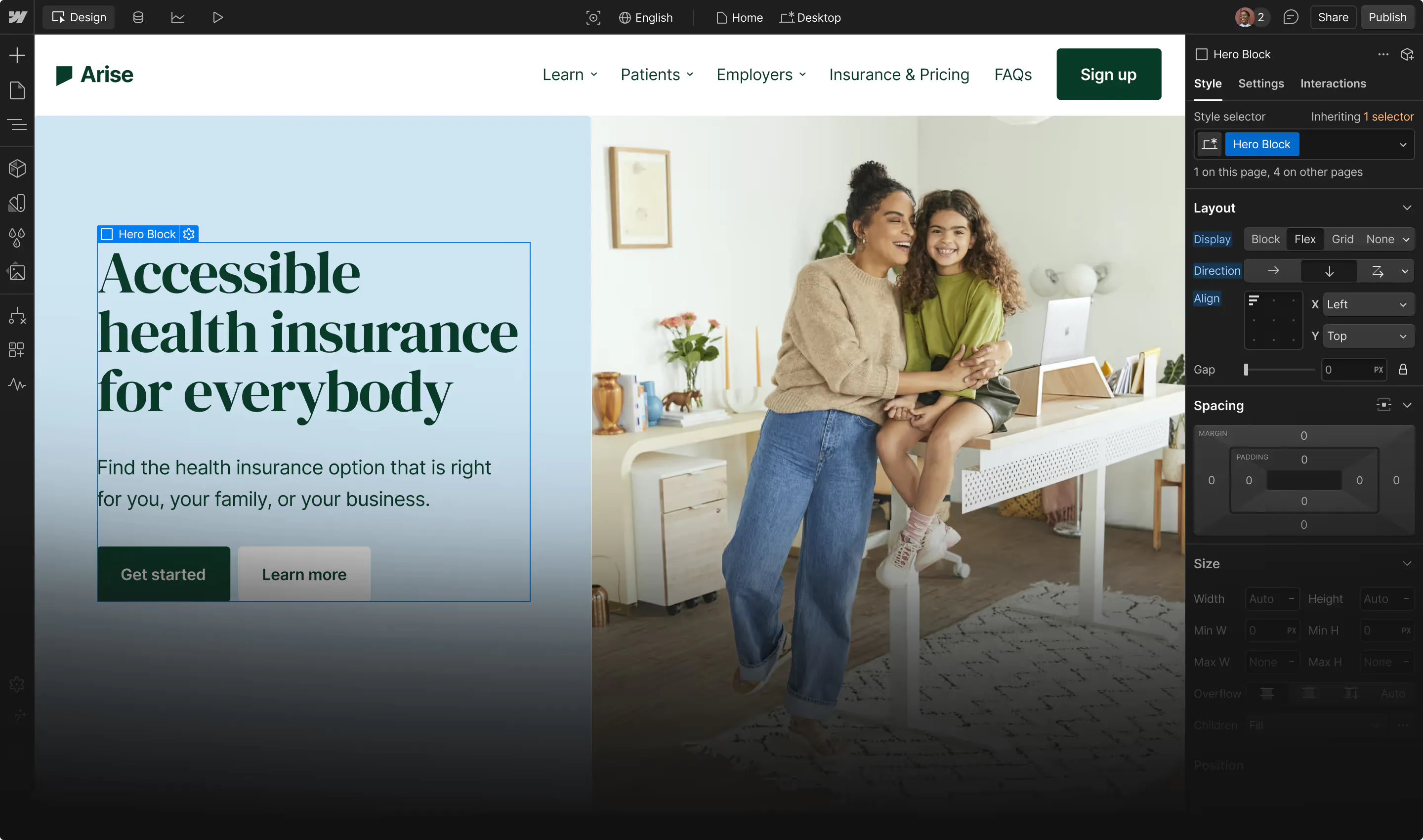AI is undeniably changing the search landscape, but marketers are receiving mixed messages on how to respond.
Some experts are promoting specialized AEO (Answer Engine Optimization) strategies, while others insist this is simply good SEO with a new name.
Here’s the reality: LLMs like ChatGPT and Perplexity represent less than 2% of total searches. Meanwhile, Google’s AI Overviews (AIOs) are becoming more prevalent while reducing clickthrough rates by about 35%.
But there’s a silver lining. Many brands are seeing homepage traffic increase (likely related to LLM responses) — and the traffic that does manage to come through from AI searches tends to convert at higher rates.
As SEO Lead here at Webflow, I’ve seen this impact firsthand: AI search traffic is now a meaningful business driver, and trending up. As of June 2025, 8% of our total new signups now come from AI, compared to just 2% in October 2024.
This is the real-world impact of AI: our potential customers are using AI to research website platforms, and when the answers they receive lead them to Webflow, they’re well-informed and ready to sign up.
Our team believes that optimizing for AI search — whether you call it AEO or GEO (generative engine optimization) — is becoming mission-critical as the ways people search, discover, and engage with content are shifting. The surfaces where we show up as a brand are expanding — and it gives us the opportunity to target more high-intent and engaged users.
Since AEO is an emerging channel with many open questions — and given that our platform empowers millions of users to build, manage, and optimize websites — we want to bring some clarity to the conversation.
So let’s take a look at how we’re improving our own brand’s visibility in AI search, and explore one specific content optimization strategy that’s already paying off.
Our strategy for showing up in AI search
Our approach to AEO has two main objectives: increasing Webflow’s earned visibility in AI search, and optimizing our owned content.
Goal #1: Increasing brand visibility
First, we want to show up more prominently when AI engines answer questions about our key market categories: website development platforms and content management systems (CMS). Increasing our brand visibility doesn’t just fall to SEO — it’s a full team effort.
To do this, our marketing team is working to increase brand mentions in the influential sources that AI and LLM tools rely on for training data and reference most in live searches: tech publications, Reddit, YouTube, and industry sites.
Goal #2: Optimizing owned content
Second, we’re also focusing on creating and optimizing quality content that aligns with the topics and content structures favored by LLMs and Google AIOs.
Since we can't see the specific prompts people are asking AI chatbots, we can look at existing pages that drive AI search traffic and conversions now, to gather insights about the topics and content types that work best — helping us identify gaps, create new content, and optimize other pages to capture more visibility.
Optimizing our owned content for AI involves:
- Delivering meaningful, valuable content and avoiding fluff
- Answering search intent quickly and clearly
- Structuring content — including headlines, sections, and formats — for semantic parsing
- Breaking content into concise, relevant questions aligned with search queries
- Providing original value (like data, examples, and frameworks)
Sound familiar? Much of this all naturally overlaps with existing SEO best practices — especially since data shows a strong correlation between higher rankings in traditional search and inclusion in AI-driven search answers.
So we’re going to keep focusing on creating top-performing content, just like we’ve always done, but with an added lens of optimizing for AI agents in addition to human readers.
All of this helps our brand build not only editorial quality, but also authority and presence since trusted sources are more likely to earn citations. We ultimately want to optimize content that meets the searcher where they're at.
To see what this all looks like in action, let’s examine one of our recent initiatives: using automation to scale our content optimization efforts.
Our strategy in action: optimizing existing content at scale
Our blog has over a thousand editorial articles that drive inbound traffic — so keeping this library updated and optimized is a pretty monumental task.
Typically, each article refresh required keyword research, competitor analysis, writing, editing, and manual CMS updates. With our current resources, we could only update about four articles per month — nowhere near the pace we need to stay competitive as search algorithms and AI capabilities keep changing.
Automating content optimization with AI
Perhaps ironically, we determined the best way to optimize content for AI at scale was using AI to optimize content.
After evaluating a few different tools, we partnered with AirOps to automate manual steps in our content refresh process:
- Conducting keyword and competitor research
- Generating targeted content improvements while maintaining brand voice and messaging
- Including human-review checkpoints and editorial review
- Pushing finalized updates through an integration with the Webflow CMS
Throughout the process, our team maintains full visibility and approval control for all content updates — making sure the automated recommendations always measure up to our high standards of quality.
After setting up our AirOps workflow, we’re able to refresh five times more content than before. We’ve progressed from manually refreshing fewer than 50 articles per year to automatically optimizing dozens every month. And within days, we saw a 40% uplift in total organic traffic for updated content.
Content optimization pays off — and it feels like a new superpower for our SEO team.
We’re all learning AEO together
So, is optimizing for AI search just another step in SEO? Yes.
Is it worth understanding and investing in? Also yes.
Our own journey with AI search optimization is just beginning, but early results show that strategic investment in AEO can drive meaningful results. Stay tuned for more learnings and best practices in the months to come.
Ready to learn more hands-on strategies to stay competitive in an AI-accelerated environment? Check out our webinar Architecting for AI: Strategies to drive AEO, conversion, and impact.


















.jpeg)
Architecting for AI
Join us for practical tips on how to build websites and workflows that win in an AI-powered world.
































